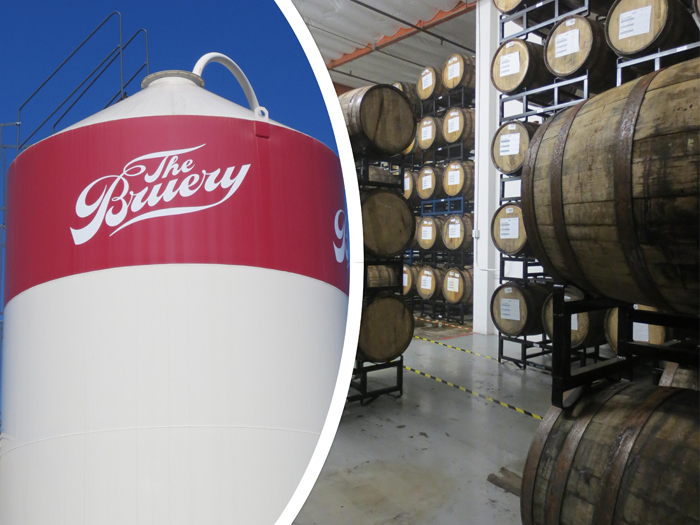Last Friday barrel aged beer fans throughout the world raised a snifter to toast Barrel Aged Beer Day. Started by The Bruery® in 2013, Barrel Aged Beer Day celebrates all the delicious beers created through the art and science of barrel aging.
As noted by The Bruery, “barrel aged beers showcase a vast, and often rather intense, spectrum of flavors — from quenching sours to decadent stouts… Each time we sip on a barrel aged beer, we’re savoring the investment of time, energy, and capital that went into it.”
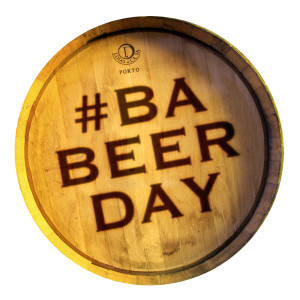
Short Overview and History of Barrel Aged Beer
The history of barrel matured beer is long and diverse. For centuries, wooden vessels stored wines, spirits, and beers.
Because of its strength, oak has traditionally been the preferred wood. Oak casks were originally unlined, allowing beers to pick up woody and tannin flavors. Sometimes, other flavors would be introduced by naturally occurring microbes trapped in the wood.
The popularity of lager beers and their subtle flavors influenced brewers to eliminate wood-induced characteristics by lining their wooden fermentation vessels and storage casks with wax, enamel or pitch and then later using metallic vessels. But in some cases brewers wanted to retain the aroma and flavor characteristics introduced by the unlined wood or wood-harbored microbes.
Belgian breweries like Cantillon and Rodenbach have used unlined oak vessels to ferment and age lambics, gueuzes, or Flanders red sour ales since their inception. Oak tanks and barrels have traditionally been used to promote oxygen permeability and microbe harboring surfaces to develop these wild ales.
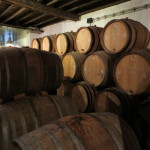
Some Czech Pilsner breweries like Pilsner Urquell mature their beer in unlined oak barrels to add flavor from the wood. Pilsner Urquell even has its own cooperage for making the barrels.
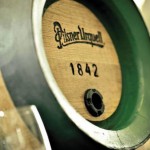
Traquair House, a Scottish brewery that originated in the 1700s and resumed operations in 1965, uses unlined wooden fermenting vessels called tuns made from Russian memel oak. Some of these tuns are over 200 years old. According to their website, Traquair is the only UK brewery left fermenting its beer in unlined oak vessels.
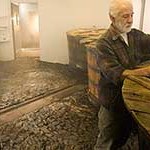
Since the 1990’s, many modern brewers have explored the use of wood chips and wooden barrels (bourbon, wine, sherry, etc.) for adding complex flavors and depth to beer. What started as basically an experimentation by these brewers has grown to one of the most recent and fastest growing trends in the brewing industry. There are even beer festivals throughout the world these days whose sole focus is barrel-aged beers. Some of my readers may remember my writing about this trend when I visited Austin Nichols Wild Turkey in 2013.
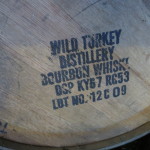
As pointed out by Randy Mosher in his book, Tasting Beer: An Insider’s Guide to the World’s Greatest Drink – “Stainless steel suits the squeaky-clean nature of international lager perfectly, but if you love the funky depths of a truly handmade beer, wood can offer that extra dimension… Wood contains chemicals that dissolve in the beer over time, which can add woody, oaky, and other flavors to beer… Over a period of many months, one of these substances, lignin, transforms into vanillin, which is why vanilla notes are often found in whiskey and other barrel-aged spirits… The bourbon industry uses the expensive charred-oak barrels only once for bourbon, so when emptied, they are relatively cheap to purchase. They can be great for aging beer.”
In addition to bourbon barrels, many beers are now aged in wine barrels, rum barrels, tequila barrels, rye barrels, Scotch barrels, and even new oak or other wood barrels. This diversity of barrel types offer a wide range of aroma, flavor, and mouthfeel characteristics that can be introduced for different beer styles.
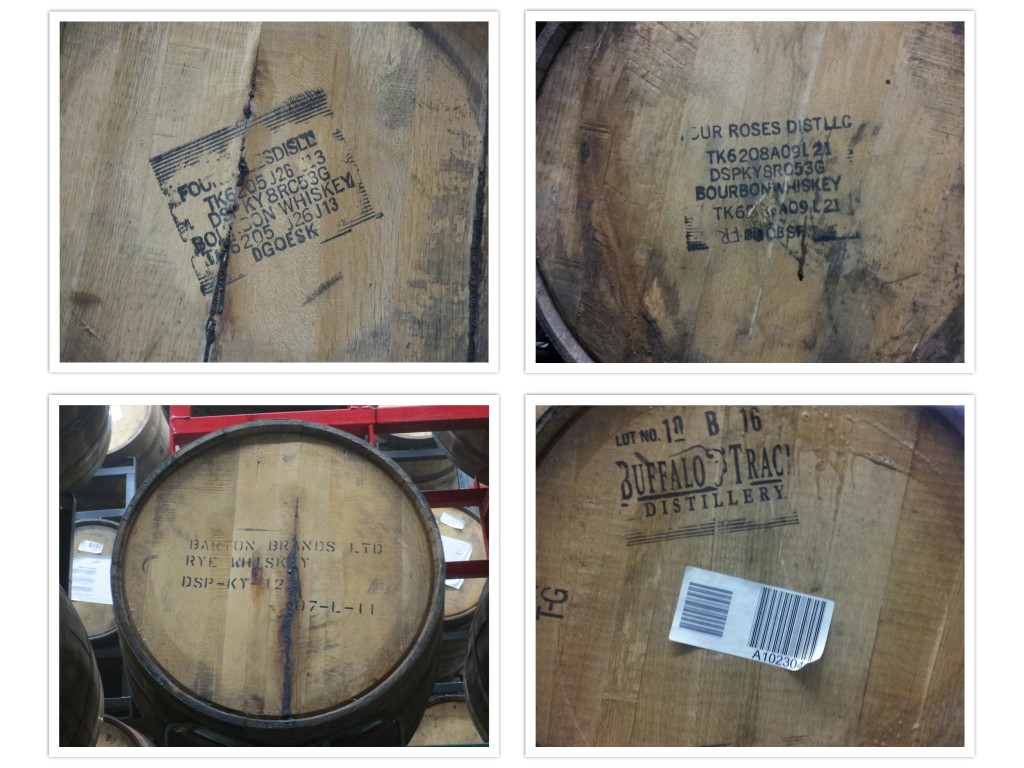
Not all beers benefit from barrel aging. However, the impact of wood and barrel aging for certain beers can result in an amazingly intense and complex drinking experience.
Celebrating Barrel Aged Beer Day
To celebrate Barrel Aged Beer Day I drove to the home of origin for this new holiday – The Bruery. Founded in 2008, The Bruery’s name was created from a metamorphosis of founder Patrick Rue’s family surname.
Located in Orange County, CA, The Bruery specializes in producing barrel aged and experimental ales and have developed an impressive reputation for their products. As noted on their website, “…The Bruery team is passionate about coming up with beers that defy the norms and styles of beers out there, and barrels open up endless possibilities to grow our beer program.” A devoted cult of craft beer drinkers enthusiastically share this passion.
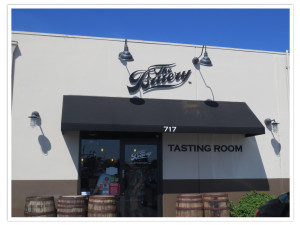
Upon arrival, a small group of very lucky people (including me) were whisked away by Cambria Griffith, Marketing Manager for The Bruery® & Bruery Terreux®, to a barrel aging warehouse a couple of blocks from the tasting room. Joel Kennedy, Direct Channel Marketing Manager, also accompanied the group.
The barrel aging warehouse we visited holds beers such as quads, porters, and stouts. Sour or wild ales are aged in barrels in a separate warehouse about 3 miles away to prevent any risk of cross contamination by aggressive yeasts or other microbes.
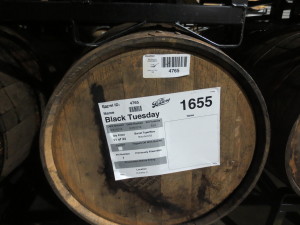
Inside the warehouse, Barrel House Wood Cellarman Caesar Alfaro provided our tour. His passion for craft brewing and barrel aged beers shined like a beacon in the night.
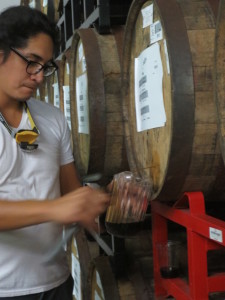
Two things about the warehouse were immediately apparent – 1) the warehouse had a huge number of barrels and 2) the warehouse was very humid. Caesar explained that the warehouse holds about 1500 barrels in a humidity controlled environment set at about 60% humidity. The high humidity helps prevent the wooden barrels from developing any microscopic cracks or openings that could contribute to air permeation and contamination of the beer. These beers can age in the barrels for months or years so extreme care is essential.
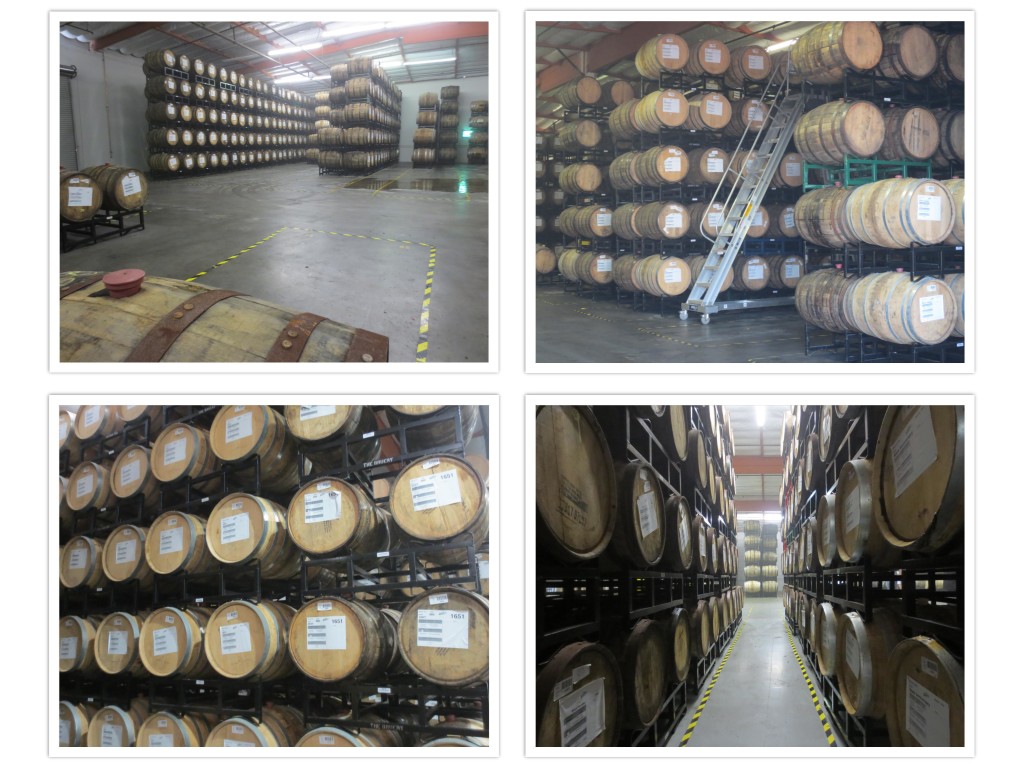
Blending to achieve the desired aroma, flavor, and mouthfeel characteristics is usually a critical element for creating the final product when barrel aging beers. This can include blending of older and newer batches, different strengths, or sometimes even different beer styles. Blending is actually an art in itself. All About Beer Magazine author Patrick Dawson wrote an excellent overview of blending that I highly recommend (click here).
While touring, we tried a few samples drawn directly from barrels, including pre-blended Black Tuesday and bourbon barrel aged Seven Swans a Swimming. What a treat!

We were also shown barrels of the rarest beer in The Bruery’s Barrel Warehouse – although tasting was not allowed. Named after founder Patrick Rue’s daughter, this beer is barrel aging for her exclusive enjoyment once she turns 21 years of age in another 16 years. What a priceless gift!
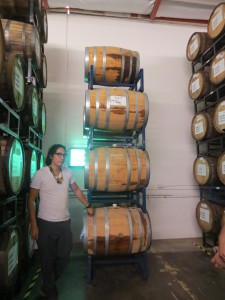
Once completing the tour, I headed over to The Bruery Tasting Room and discovered an impressive and long list of rare (and in some cases discontinued) barrel aged beers exclusively on tap and in bottles to celebrate Barrel Aged Beer Day.
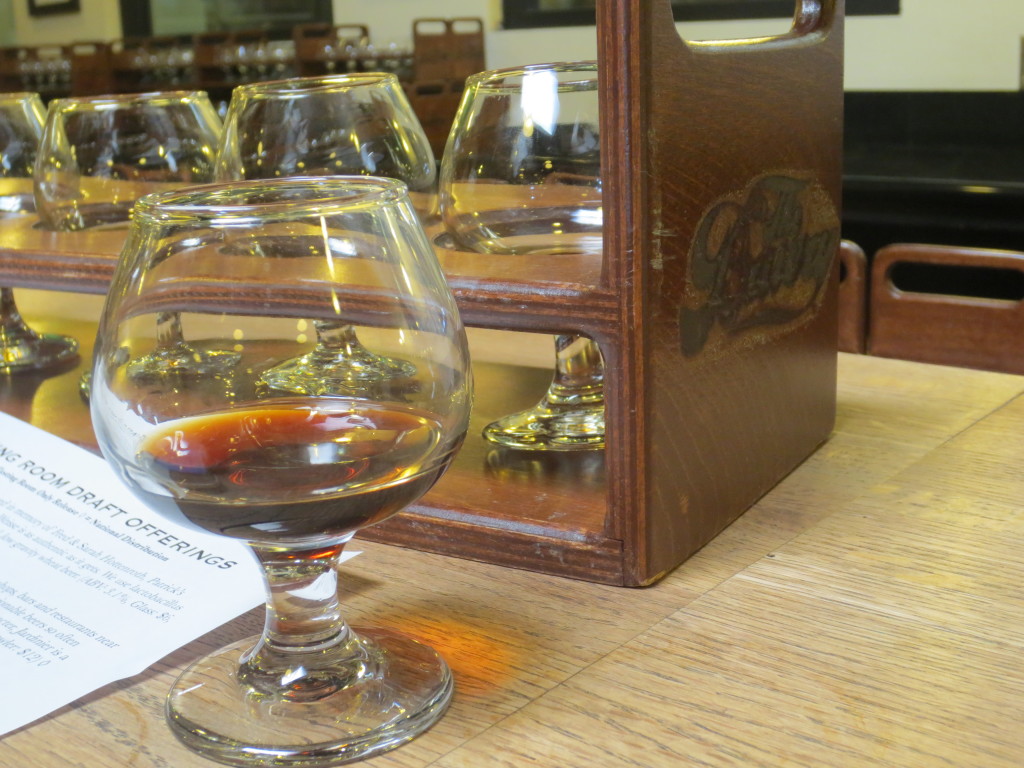
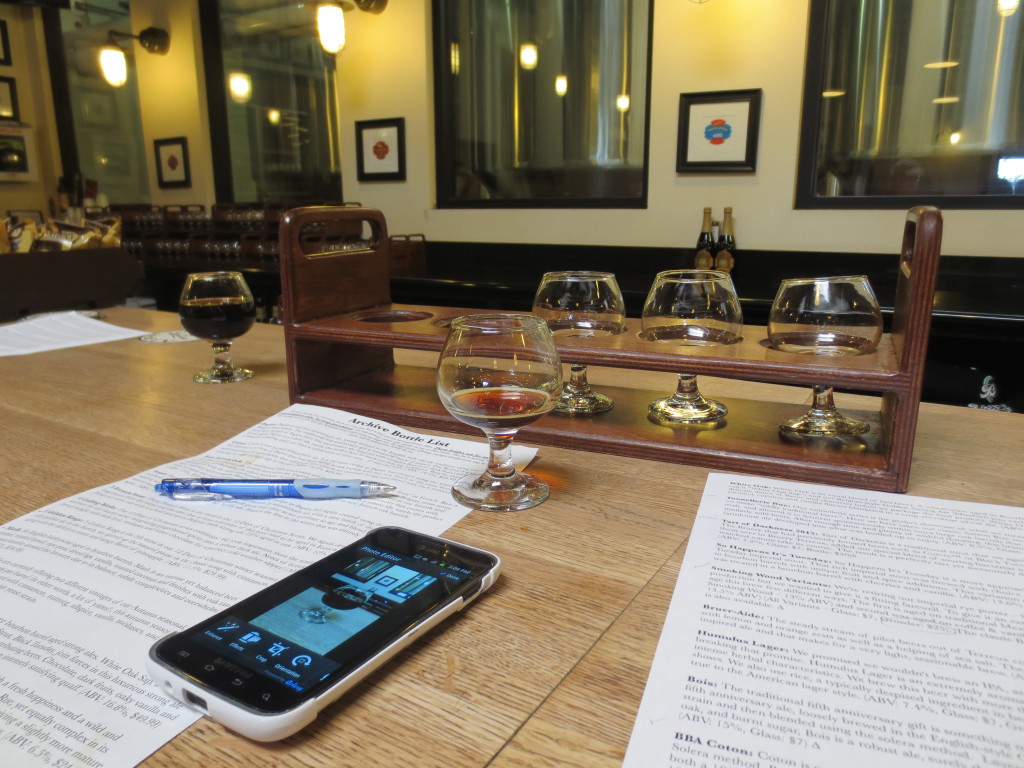
As I sampled and enjoyed some of these rare and delicious beers, I couldn’t help but think about the art, skill, patience, and loving care applied in their creation. Cheers to Barrel Aged Beer Day and the passionate people who make this day so delicious!
A huge thank you to Cambria Griffith, Caesar Alfaro, Joel Kennedy, and all The Bruery staff for making this day possible and so perfect.
Except where otherwise noted, my very talented wife Patricia took all of the photographs in this post.
Want to see more photographs from my visit to The Bruery? Check out the slide show below.
